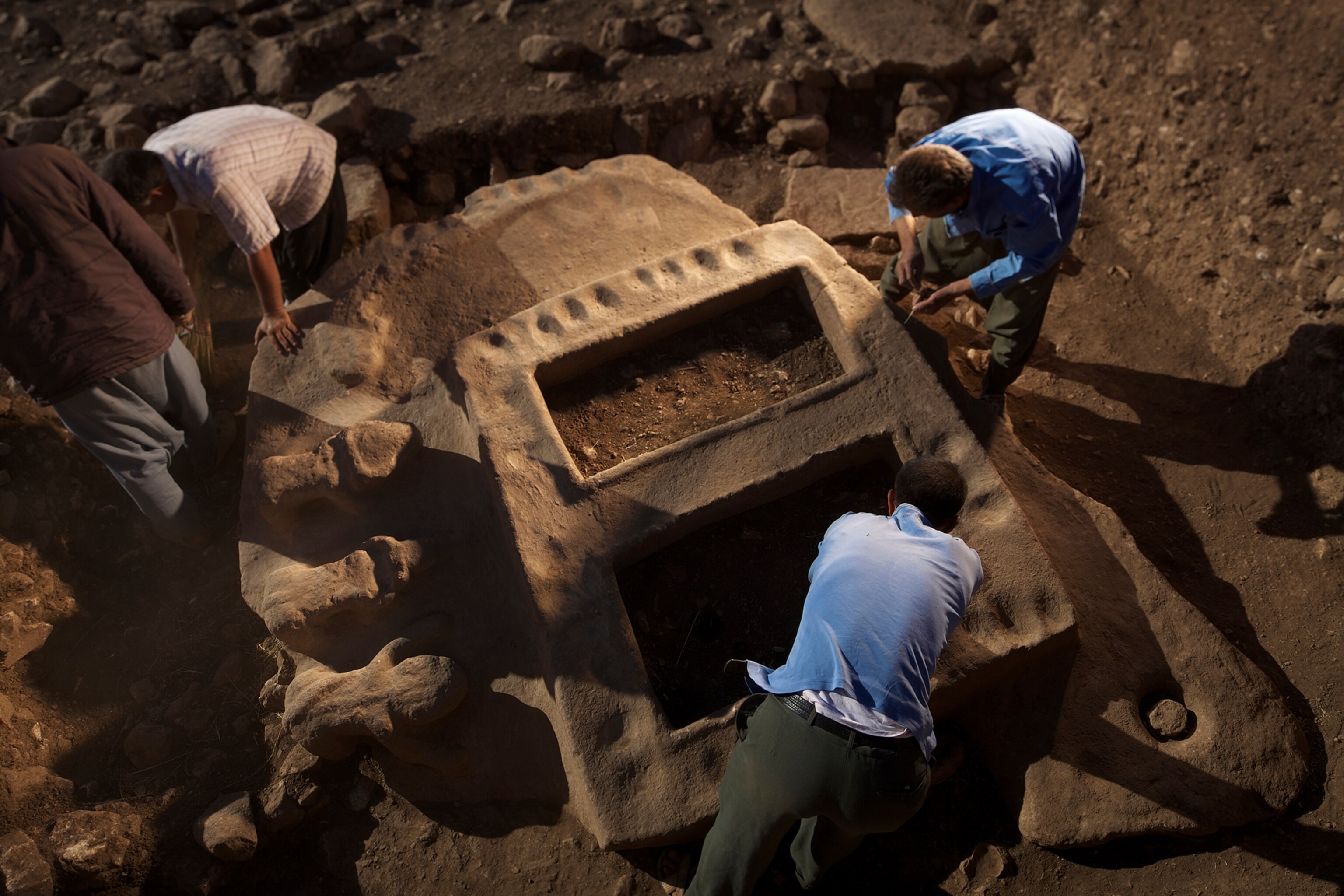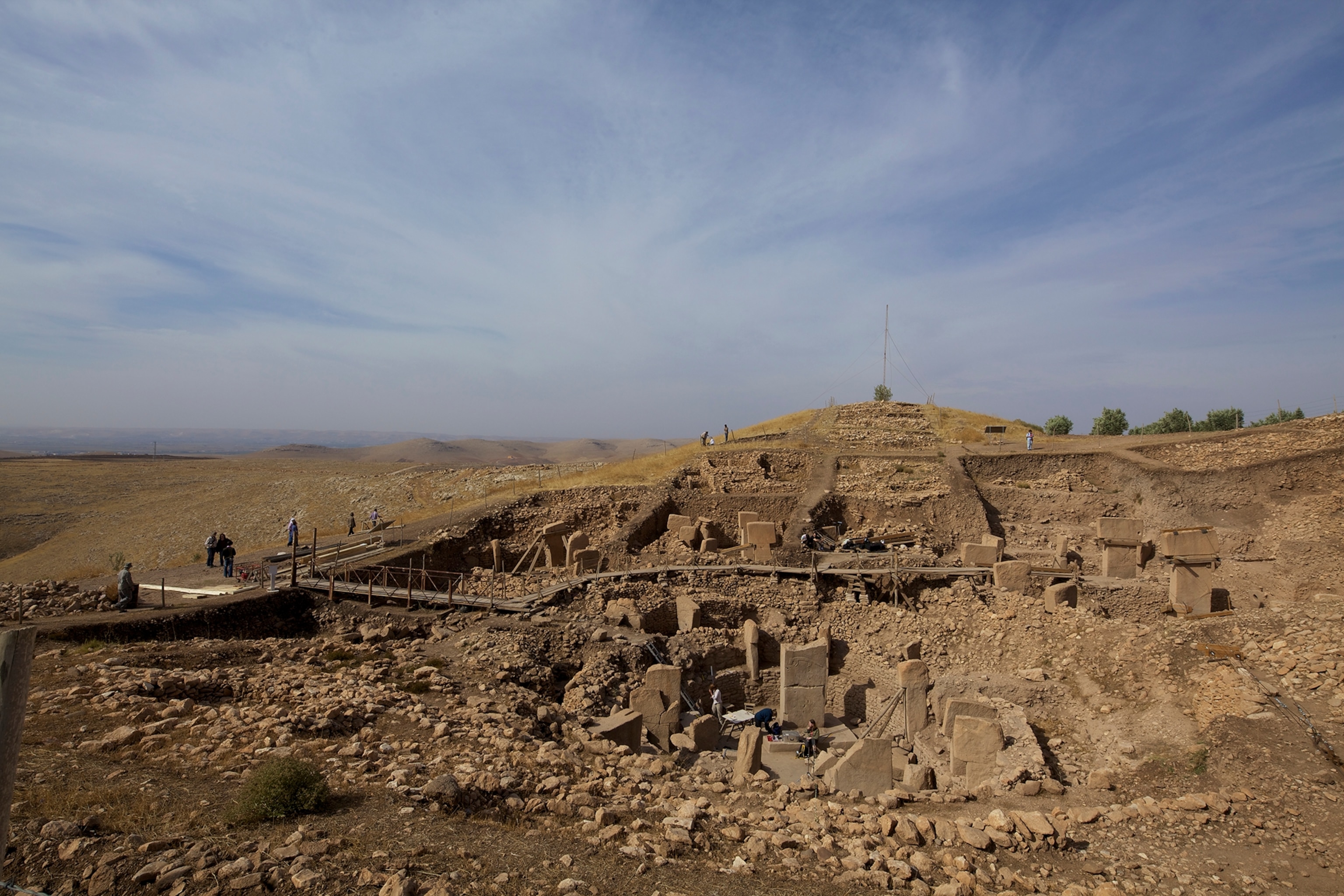
World's Oldest Temple to Be Restored
The ancient site of Göbekli Tepe in Turkey has rewritten the early history of civilization.
The world’s oldest monuments may soon get an image makeover. A new project will promote and preserve Göbekli Tepe, home to the most ancient temple structures ever discovered.
Turkey hopes to eventually boost tourism at the site, which is in a region where tourism has declined because of the nearby Syrian conflict and refugee crisis.
Since excavations began in 1995, the site in southeastern Turkey has changed the way archaeologists think about the origins of civilization. Its circular structures, with their elaborately carved stones and distinctive, T-shaped pillars, are more than 12,000 years old—older than the invention of agriculture or even pottery.
The early dates have upended the idea that agriculture led to civilization. Scholars long thought that when hunter-gatherers settled down and started growing crops, the resulting food surplus made it possible for people to organize complex societies.








Göbekli Tepe calls that conventional wisdom into question. Klaus Schmidt, a German archaeologist who led excavations at the site, argued before he died in 2014 that it might have worked the other way around: The vast labor force needed to build the enclosures pushed people to develop agriculture as a way of providing predictable food—and perhaps drink—for workers.
At the World Economic Forum in Davos, Switzerland, Turkey’s Doğuş Group will announce Wednesday that they plan to spend $15 million over the next 20 years on the project, in partnership with the National Geographic Society. “Göbekli Tepe is our zero point in time,” Doğuş Group chairman Ferit F. Şahenk said in a press release.
Earliest Religious Site?
Newly gathered evidence from excavations at the site backs up Schmidt’s argument that the beginnings of civilization spurred the invention of farming. In the middle of each monumental enclosure are two tall T-shaped pillars, carved with stylized arms, hands and loincloths. The largest weigh more than 16 tons. Carving and moving them from a nearby quarry must have been a tremendous challenge, requiring hundreds of people and enough food to feed them all.
But archaeologists have yet to find evidence of permanent settlement at Göbekli Tepe. One recent suggestion is that the site was a regional gathering place. It’s perched on top of a bone-dry peak, with a commanding view of the surrounding mountains and the plains to the south.
“Back then people would have to meet regularly to keep the gene pool fresh and exchange information,” says Jens Notroff, a German Archaeological Institute archaeologist who works on the site. “It’s a landmark. It’s no accident they gathered there.”
In fact, smaller versions of the pillars, symbols and architecture carved into stone at Göbekli Tepe have been found in settlements up to 125 miles away. It’s as though Göbekli Tepe were a cathedral and the others local churches; hunter-gatherers might have traveled long distances to meet, worship and help build new monumental structures, sponsoring feasts to display their wealth.
“The feasting aspect is the easiest explanation for attracting a labor force to construct the enclosures,” Notroff says.
As they’ve dug deeper into the hilltop, archaeologists have found other evidence for feasting: After they were built, the stone enclosures were filled in with dirt, stone, and animal bones. Over the course of centuries, new structures were built on top of the backfill, creating a man-made mound. The debris includes tens of thousands of broken animal bones, including gazelles and aurochs, a type of wild cow that’s now extinct. There are also huge stone vessels, big enough to hold more than 40 gallons of liquid—perhaps early beer.
Tour Buses and Refugees
The new funding comes at a critical time for Göbekli Tepe. As the site has gained international prominence, it’s become a bona fide tourist attraction. Less than a decade ago, the hilltop was reachable only via a bumpy ride on a rough dirt road. The occasional visitor might be shown around by Schmidt himself.
Today, tour buses sometimes unload hundreds of visitors each day in front of a small visitor’s center, and Turkish travel agencies promote special Göbekli Tepe tours. There’s a gift shop and parking lot, and Turkey’s largest archaeological museum opened recently in the nearby city of Urfa.
Though excavation and research at the site are funded by the German Archaeological Institute and the German Research Foundation, funds from the Dogus Group, a Turkish conglomerate that includes tourism and media companies, will go toward building a new, larger visitor’s center and protective canopies for the structures that have already been uncovered, along with walkways and fencing to help manage tourism’s impact on the ancient enclosures.
“This impressive partnership between the Sahenk Initiative and the Turkish Ministry of Culture and Tourism is sure to shed new light on Gobekli Tepe’s historical significance—not only for Turkey but for the world,” said Terry Garcia, chief science and exploration officer for the National Geographic Society.
It’s good news in a region that desperately needs some. As Syria has become less stable, Notroff says, the flood of tourists to the site has visibly slowed.
Urfa is just a few miles from Turkey’s border with Syria, and is a key crossing point for refugees fleeing the conflict there. When the Syrian town of Kobani was under attack by ISIS last year, smoke from the battle could be seen from the mountaintop dig site.
You May Also Like
Go Further
Animals
- How scientists are piecing together a sperm whale ‘alphabet’How scientists are piecing together a sperm whale ‘alphabet’
- Orangutan seen using plants to heal wound for first timeOrangutan seen using plants to heal wound for first time
- What La Palma's 'lava tubes' tell us about life on other planetsWhat La Palma's 'lava tubes' tell us about life on other planets
- This fungus turns cicadas into zombies who procreate—then dieThis fungus turns cicadas into zombies who procreate—then die
Environment
- This floating flower is beautiful—but it's wreaking havoc on NigeriaThis floating flower is beautiful—but it's wreaking havoc on Nigeria
- What the Aral Sea might teach us about life after disasterWhat the Aral Sea might teach us about life after disaster
- What La Palma's 'lava tubes' tell us about life on other planetsWhat La Palma's 'lava tubes' tell us about life on other planets
- How fungi form ‘fairy rings’ and inspire superstitionsHow fungi form ‘fairy rings’ and inspire superstitions
- Your favorite foods may not taste the same in the future. Here's why.Your favorite foods may not taste the same in the future. Here's why.
- Are the Great Lakes the key to solving America’s emissions conundrum?Are the Great Lakes the key to solving America’s emissions conundrum?
History & Culture
- These were the real rules of courtship in the ‘Bridgerton’ eraThese were the real rules of courtship in the ‘Bridgerton’ era
- A short history of the Met Gala and its iconic looksA short history of the Met Gala and its iconic looks
- Meet the ruthless king who unified the Kingdom of Hawai'iMeet the ruthless king who unified the Kingdom of Hawai'i
- Hawaii's Lei Day is about so much more than flowersHawaii's Lei Day is about so much more than flowers
Science
- Why ovaries are so crucial to women’s health and longevityWhy ovaries are so crucial to women’s health and longevity
- Orangutan seen using plants to heal wound for first timeOrangutan seen using plants to heal wound for first time
Travel
- Why this unlikely UK destination should be on your radarWhy this unlikely UK destination should be on your radar






